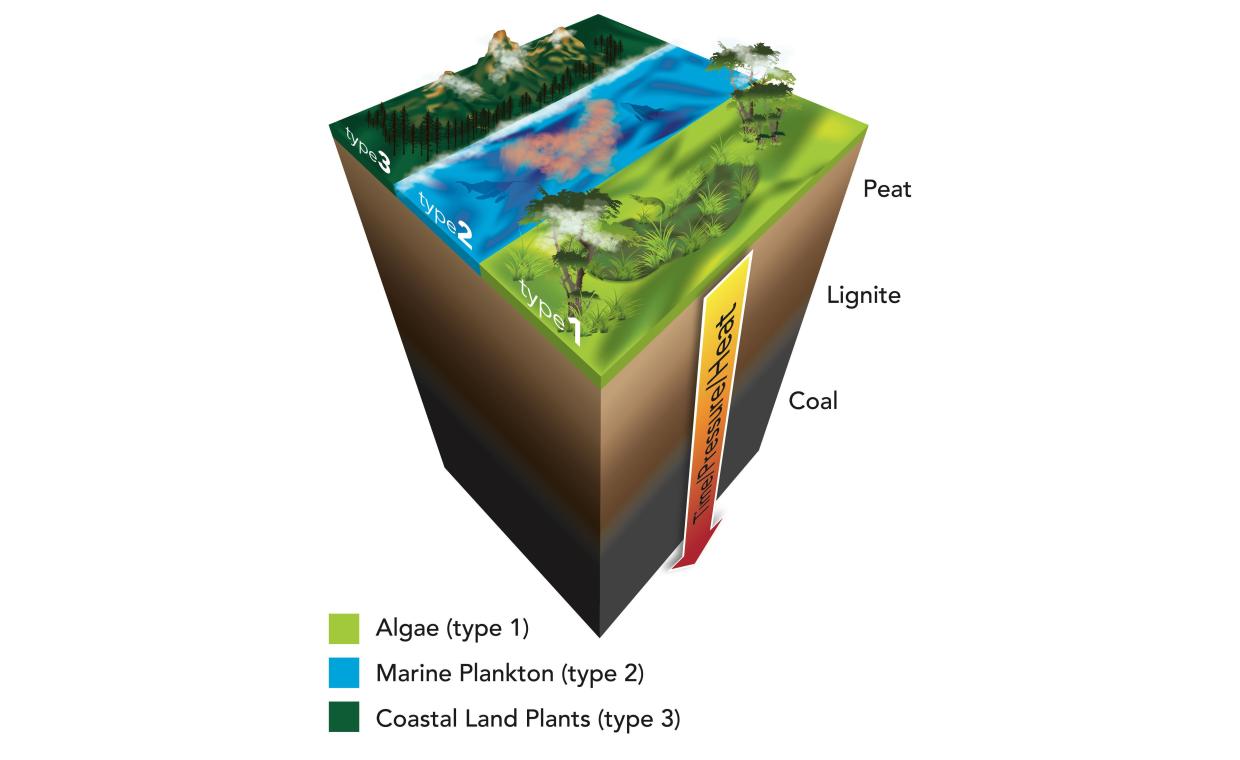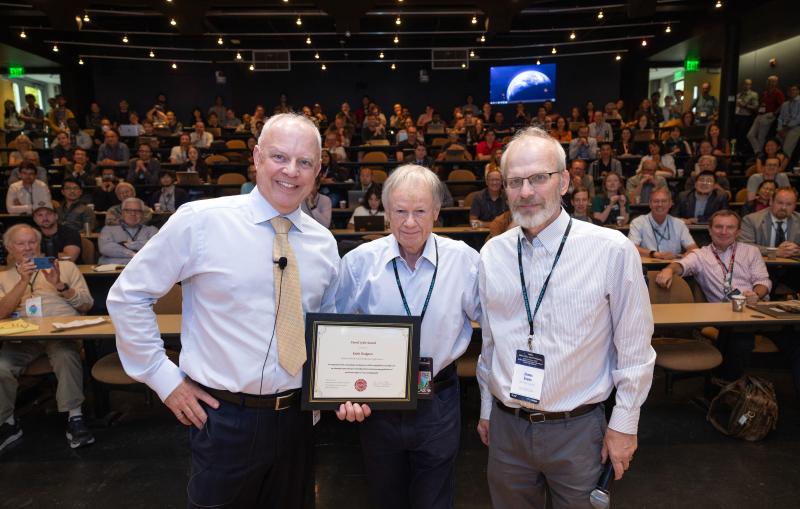Q&A: Scientists use X-rays to crack the secrets of shale, a keystone of one of the nation’s fastest growing energy sources
A better understanding of these materials and how they store and transport oil and gas could one day enable more efficient fossil fuel production.
Natural gas and crude oil locked away inside layers of shale, a type of sedimentary rock, is one of the nation’s largest and fastest growing energy sources. According to Drew Pomerantz, a scientist at Schlumberger, an oilfield services company, two of the most fascinating scientific questions related to shales are what they are composed of and how oil and gas are stored and transported in the rocks.
To tackle these questions, Pomerantz and his team struck up a collaboration with Dimosthenis Sokaras, a scientist at the Department of Energy’s SLAC National Accelerator Laboratory. Using SLAC’s Stanford Synchrotron Radiation Lightsource (SSRL), the researchers are developing techniques to investigate naturally occurring forms of carbon such as the one found in shale.
Earlier this year, they published a paper in Energy & Fuels about a wide variety of forms of carbon found in nature, including kerogen, which is organic carbon found in sedimentary rocks and is the most abundant form of naturally occurring organic carbon in the Earth’s crust.
These materials can either be mostly aromatic, containing carbon atoms connected by strong, rigid bonds, such as in graphite or coal, or mostly aliphatic, containing carbon atoms connected by weak, flexible bonds, such as in wax or oil. The researchers found that despite these fundamental differences, the aromatic carbon is always structured the same.

Why is it important to study carbon?
Sokaras: Carbon is everywhere, and it comes in so many different forms. Although all of these forms are composed of the same element, the arrangement of their electrons, and hence their bonding, leads to vastly different properties
Pomerantz: In nature, you’ve got a little bit of carbon in the air and on the Earth's surface, a little bit of carbon in lakes and oceans, but the lion’s share of the planet’s organic carbon is actually underground. And the closer you get to the center of the Earth, the higher the temperatures and pressures get, which changes the chemistry of materials. These changes, which can ultimately lead to the formation of oil and gas, result from a process known as “thermal maturation.” We wanted to study representative samples of the many different forms of naturally occurring organic carbon, including samples with different thermal maturities.
Our hope is that if we can understand the structure of carbon formations where oil is produced and the chemical and physical processes that occur in them, we can make better predictions about where to find oil and how to extract it from the ground. This can also teach us about what happens when we try to remove carbon dioxide from the atmosphere by burying it underground, where it interacts with organic carbon that's already in there.
What progress has been made on this front at SSRL so far?
Pomerantz: In 2018, we published a foundational paper in the Journal of Physical Chemistry A in which we discovered that the structure of aromatic carbon is reflected in its X-ray spectra and that the structure could be measured experimentally using a unique form of X-ray spectroscopy at SSRL.
In our most recent paper, we took what we learned in our previous work and applied it to real world materials to see if we could use our technique to differentiate between them. In addition to looking at samples of kerogen over a range of types and thermal maturities, we looked at forms of carbon from a variety of fresh materials–such as in algae and plant materials–and from coal and petroleum-based materials. We showed that all these materials share a commonality: for the portion of the materials that are composed of aromatic carbon, that aromatic carbon always has the same structure. Since the structure of aromatic carbon controls its properties and reactivities, these results help explain some of the chemical reactions that occur in nature, including the ones involved in creating oil.
What enabled you to achieve these results?
Sokaras: Through the years, researchers have developed a number of techniques that can sensitively separate the various forms of carbon in model systems. However, when you're moving to real world naturally occurring specimens, things may become a little messier. In fact, such samples may consist of complex inhomogeneous mixtures of organic materials and often be in a non-solid, thick-liquid phase. Such cases are difficult to study using more traditional techniques with ultrahigh vacuum requirements or surface sensitivity. At SSRL, we’ve developed hard, or high energy, X-ray inelastic scattering techniques that allow us to chemically analyze these forms of carbon in naturally occurring samples ‘as-is’, providing insight into the chemistry of organic material like shale.
What are the next steps? Where do you hope this research leads?
Pomerantz: These studies have provided a conceptual understanding of the structure of a broad class of organic molecules and hopefully will be used in the future to improve not only the process of producing oil and gas from shales but also the process of storing carbon dioxide in shales.
Sokaras: From a SLAC perspective, we're also trying to see how we can engage other scientists in the energy community and demonstrate the value of our experimental methods. We hope that by providing key insights into oil-related compounds and showing how the techniques we develop here are applicable to real world problems that oil companies are interested in, we can further grow our energy-focused science program.
SSRL is a DOE Office of Science user facility. For questions or comments, please contact the SLAC Office of Communications at communications@slac.stanford.edu.
Citation: A.E. Pomerantz et al., Journal of Physical Chemistry A, 13 June 2018 (10.1021/acs.jpca.8b04922)
A.E. Pomerantz et al., Energy & Fuels, 5 February 2019 (10.1021/acs.energyfuels.8b04366)
SLAC is a vibrant multiprogram laboratory that explores how the universe works at the biggest, smallest and fastest scales and invents powerful tools used by scientists around the globe. With research spanning particle physics, astrophysics and cosmology, materials, chemistry, bio- and energy sciences and scientific computing, we help solve real-world problems and advance the interests of the nation.
SLAC is operated by Stanford University for the U.S. Department of Energy’s Office of Science. The Office of Science is the single largest supporter of basic research in the physical sciences in the United States and is working to address some of the most pressing challenges of our time.





